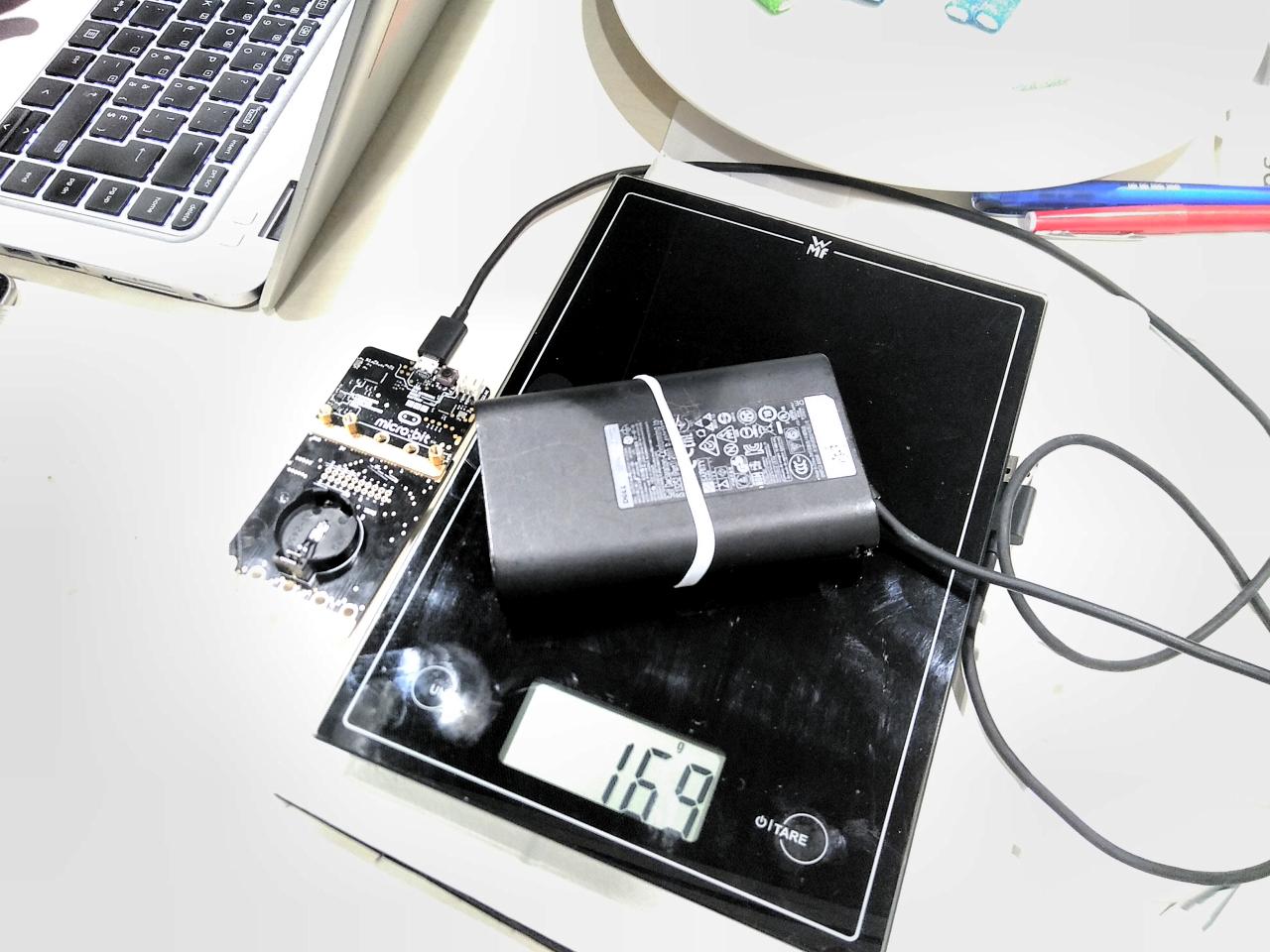Jambricks
Plug n' play on your hackathon way!
This project devises a fun way to investigate the equipment that people bring to a hackathon, and provoke conversation about energy usage and standards.
How to
1. Bring a kitchen scale to the hackathon, or find one on location

(Thanks, Bernhard!)
((The Micro:bit is just for decoration - bonus points for using a smart scale!))
2. Collect the data in some way. You can use our proto-app, for instance.
--> JamBricks App <--
NB: the data is not yet saved anywhere except on your own computer!
3. Measure the Weight (in grams) of every participant's power supply and read the Wattage from the label.
Pro tip: if the Wattage is not stated, multiply the number of Volts by the Amps, e.g.:
19.5V x 3.34A ~= 65W
4. Copy and paste the resulting totals on your project page, and ask the other teams to do the same!
For example, you would get something like this:

Show me the data
You can find a table of all of our results from #energyhack19 here (GitHub)
We dragged a total of 12.0 kg of power supplies rated a total of 3'890 W across all 59 people surveyed. Some people did not have a PSU and seemed to last the hackathon on a battery charge - what's your secret?
Congratulations to Andreas for bringing the "heavy" to the Hackdays, a 435 g brick, which also is the highest rated we found at 148 W.
Wait, but why?
Laptops and other mobile computing devices are a prerequisite of hackathons. You could support your team's design efforts with a pad of paper and pencil, and you should - but most people would feel left out if they came to a coding party without their devices.
People bring all kinds of hardware to hackathons. Back in the days of the LAN party we used to bring whole PCs and bulky monitors on site. These days we might do well to do our coding for the weekend on an tablet. In sports, people pay attention to the "hardware": the shape and size of bicycles or skis, for instance.
We have never thought about the power consumption figures of our computers before - but today the issues of the excessive energy consumption of IT projects is a topic of public concern (WIRED). Some people complain about their heavy power supplies, and we started wondering why Smart Homes and Offices don't have DC plugs, and got into a bit of the history of (the lack of) electricity standards.
With this project we aim to provoke some conversation about an overlooked element that may contribute to successful collaboration.
Inspirational quote
It would be quite possible to devise a universal DC outlet that depended on an ID signal from the device being supplied, either from its cable or the from the device. This only needs to be a unique ID. As we only need a small range of voltages, typically from 3V to 24V we wouldn’t need a complex code. An intelligent adaptor in the outlet would then set the voltage needed by that device. In a way this is done already with the plug and socket combination identifying the voltage. This also shows up the weakness of a smart outlet. You only need a lightweight connector for a device drawing small currents (e.g. Micro-C USB), but something more substantial would be needed for devices like printers and monitors that might draw peak currents of two or three amps. Perhaps two different sockets, one for low, and one for high power would be acceptable.
-- Rob Gillatt, Electronics Engineer via Quora
Credits
The web application is made with Vue.js based on the TodoMVC boilerplate. You can fork the source code at JSFiddle.
Inspired by crowdsourcing data from participants, by physical hackathon projects like Aufschnitthilfe, and by midnight reading about the reasons we cannot plug our devices directly into wall sockets.
🧱 3 bricks | 155 W | 261 g
Previous
Energy Data Hackdays 2019
Next project


